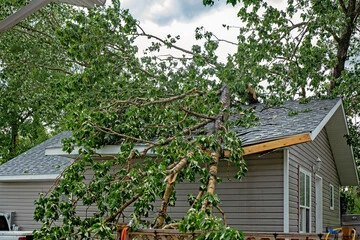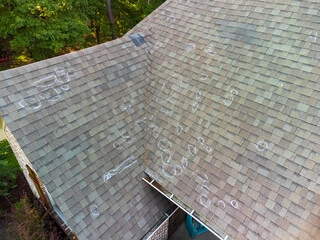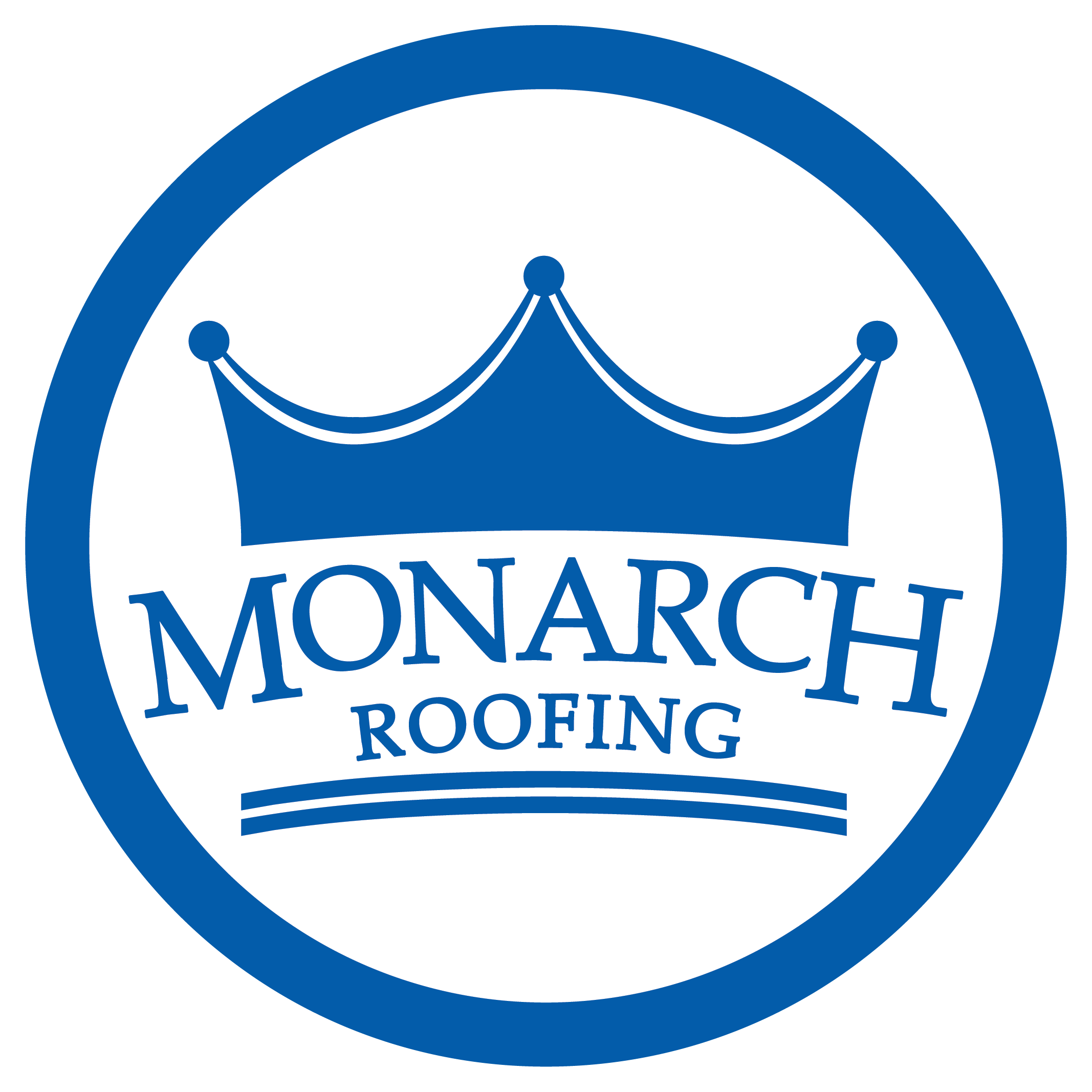Roofs are our homes’ first line of defense against the elements, but they’re also one of the most vulnerable parts. Storms, in particular, can wreak havoc on a roof, leading to severe damage that might not always be immediately visible. Knowing the signs of roof storm damage and understanding when to repair can save homeowners from costly repairs down the line and maintain the integrity of their homes. This comprehensive guide will help you identify storm damage and decide when it’s time to call in the professionals.
🤔 Understanding Roof Storm Damage
Storm damage can manifest in various forms, from minor cosmetic issues to significant structural problems. Different types of storms, such as hurricanes, hailstorms, and thunderstorms, can cause specific types of damage. Understanding the nature of these damages can help you recognize and address them promptly.
Types of Storms and Associated Damage
- Wind Storms: High winds can lift shingles, tear off parts of the roof, or cause trees and debris to fall on the roof. This type of damage can often lead to leaks and structural instability.
- Hailstorms: Hail can dent metal roofs, crack shingles, and damage skylights or vents. The impact points might not always be visible but can weaken the roofing material.
- Thunderstorms: Heavy rains combined with wind can lead to water infiltration. Lightning strikes can cause direct damage to the roof structure or create fire hazards.
- Hurricanes and Tornadoes: These extreme weather events can cause catastrophic damage, including complete roof failure, severe structural damage, and extensive water infiltration.
💡 10 Signs of Roof Storm Damage

After a storm passes, it’s crucial to inspect your roof for damage. While some signs are obvious, others require a more detailed inspection. Here are the exterior and interior indicators to look for:
1. Exterior: Missing or Broken Shingles
One of the most apparent signs of storm damage is missing or broken shingles. High winds can easily lift and tear off shingles, leaving the roof deck exposed to the elements.
2. Exterior: Dented or Cracked Shingles
Hail can cause dents or cracks in shingles. While these might not lead to immediate leaks, they can weaken the shingles and reduce their lifespan.
3. Exterior: Granule Loss
If you notice granules from your shingles in your gutters or downspouts, it could indicate that your shingles have been damaged by hail or heavy rain.
4. Exterior: Damaged Flashing
Flashing around chimneys, vents, and skylights can be damaged by high winds or debris. Damaged flashing can lead to water infiltration.
5. Exterior: Gutter Damage
Storms can dislodge or damage gutters, leading to improper drainage and potential water damage to your home’s foundation.
6. Exterior: Debris on the Roof
Fallen branches, leaves, and other debris can cause damage to the roof surface and should be removed promptly.
7. Interior: Water Stains on Ceilings and Walls
Water stains or discoloration on your ceilings and walls can indicate a roof leak. Even small stains can signify significant damage.
8. Interior: Peeling Paint or Wallpaper
Excess moisture from roof leaks can cause paint or wallpaper to peel or blister.
9. Interior: Mold or Mildew
Mold or mildew growth inside your home can be a sign of a persistent leak. Mold thrives in damp environments and can pose health risks.
10. Interior: Dripping Water
If you notice water dripping from your ceiling or down your walls during or after a storm, it’s a clear sign of a roof leak that needs immediate attention.
🏚️ When to Repair Roof Storm Damage
Determining when to repair roof damage depends on the severity of the damage and the potential risks of leaving it unaddressed. Here’s a guide to help you decide when to repair your roof:
Immediate Repairs
Some damage requires immediate attention to prevent further issues and protect your home:
- Significant Leaks: If you have water actively leaking into your home, it’s crucial to address the issue immediately. Water infiltration can damage insulation, drywall, and your home’s structure.
- Structural Damage: If a tree or large branch has fallen on your roof, it could compromise the roof’s structural integrity. In such cases, vacate the area and call a professional immediately.
- Extensive Shingle Damage: If a large number of shingles are missing or damaged, your roof is vulnerable to leaks. Quick repairs can prevent further damage and more costly repairs down the line.
- Compromised Flashing: Damaged flashing around critical areas like chimneys and skylights should be repaired promptly to prevent water infiltration.
Scheduled Repairs
Not all damage requires immediate action. Some issues can be scheduled for repair at a more convenient time:
- Minor Shingle Damage: A few missing or damaged shingles don’t necessarily require immediate repair, but they should be addressed soon to prevent further deterioration.
- Granule Loss: While granule loss can reduce the lifespan of your shingles, it doesn’t require emergency repair. However, keep an eye on the condition of your shingles and plan for replacement if necessary.
- Gutter Issues: If your gutters are damaged but not causing immediate drainage problems, you can schedule repairs to ensure they function correctly.
Preventive Maintenance
Regular maintenance can help prevent storm damage and extend the life of your roof:
- Routine Inspections: Schedule regular roof inspections, especially after major storms. A professional can identify and address minor issues before they become significant problems.
- Gutter Cleaning: Keep your gutters clean to ensure proper drainage and prevent water damage to your roof and foundation.
- Tree Trimming: Trim overhanging branches that could fall on your roof during a storm.
- Roof Cleaning: Remove debris and moss from your roof to prevent damage and maintain its integrity.
🛠️ DIY vs. Professional Repairs

While some minor repairs can be handled by homeowners, many types of storm damage require professional expertise. Here’s a breakdown of when to DIY and when to call a pro:
DIY Repairs
- Small Shingle Replacement: If you’re comfortable working on your roof and have the necessary safety equipment, you can replace a few damaged or missing shingles.
- Gutter Cleaning and Repair: Cleaning and minor repairs to your gutters can often be done without professional help.
- Debris Removal: Safely removing small branches and leaves from your roof can prevent damage.
Professional Repairs
- Extensive Shingle Damage: Large areas of damaged or missing shingles should be repaired by a professional to ensure proper installation and prevent leaks.
- Structural Damage: If a tree or large branch has fallen on your roof, a professional should assess and repair the damage.
- Flashing Repairs: Damaged flashing requires precise repair to ensure it’s watertight. A professional roofer can handle this task effectively.
- Water Leaks: If you have water leaking into your home, a professional can locate the source and repair the damage to prevent further issues.
- Hail Damage: Hail damage might not always be visible, but a professional can identify and repair any hidden issues.
🧑🔧 Choosing a Roofing Contractor
When hiring a professional roofer, it’s essential to choose a reputable contractor to ensure quality work. Here are some tips for selecting the right roofing contractor:
- Check Credentials: Ensure the contractor is licensed, insured, and bonded. This protects you in case of accidents or subpar work.
- Read Reviews: Look for reviews and testimonials from previous customers. A contractor with positive reviews is more likely to provide quality service.
- Get Multiple Estimates: Obtain estimates from several contractors to compare prices and services. Be wary of unusually low bids, as they might indicate subpar materials or workmanship.
- Ask for References: A reputable contractor should provide references from previous clients. Contact these references to ask about their experience with the contractor.
- Get a Written Contract: Ensure you have a detailed written contract outlining the scope of work, materials to be used, timeline, and cost. This protects both you and the contractor.
🙌 Protect Your Home: Expert Storm Damage Roof Repair by Monarch Roofing
Storm damage to your roof can range from minor issues to significant problems that demand immediate attention. Understanding the signs of roof storm damage and knowing when to repair are crucial steps in protecting your home and avoiding costly repairs down the line. Regular inspections and maintenance, coupled with timely repairs, extend the life of your roof and keep your home safe and secure. While some minor repairs can be handled on your own, it’s often best to call in the experts to ensure the job is done correctly.
At Monarch Roofing, we bring unmatched expertise and dedication to every roofing project. Our team of professionals is skilled in identifying even the smallest signs of damage and providing high-quality repairs that stand the test of time. We pride ourselves on using top-grade materials and the latest techniques to ensure your roof can withstand future storms. Choosing Monarch Roofing means you’re choosing a reputable contractor committed to excellence and customer satisfaction. Stay vigilant, stay safe, and keep your roof in top condition to weather any storm. Contact Monarch Roofing today to schedule an inspection and experience why we are the trusted experts for all your roofing needs.





